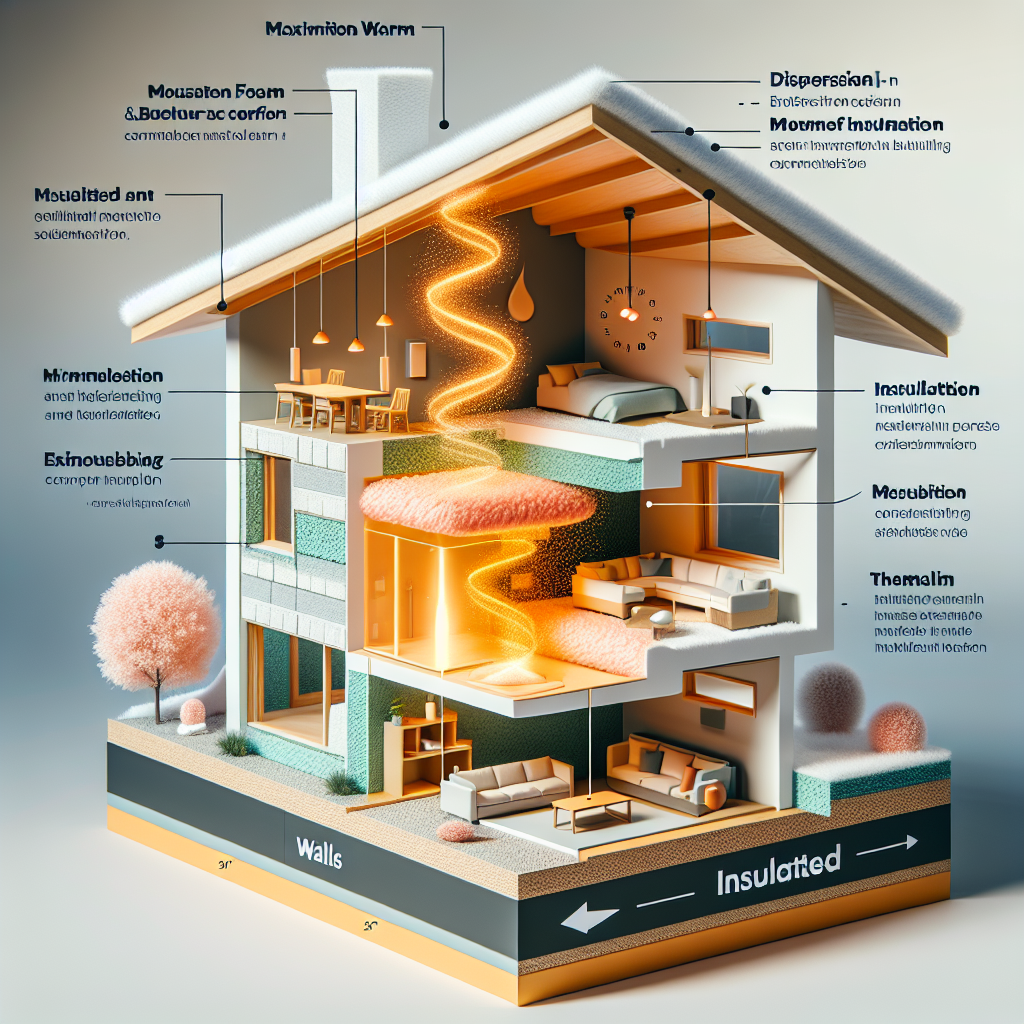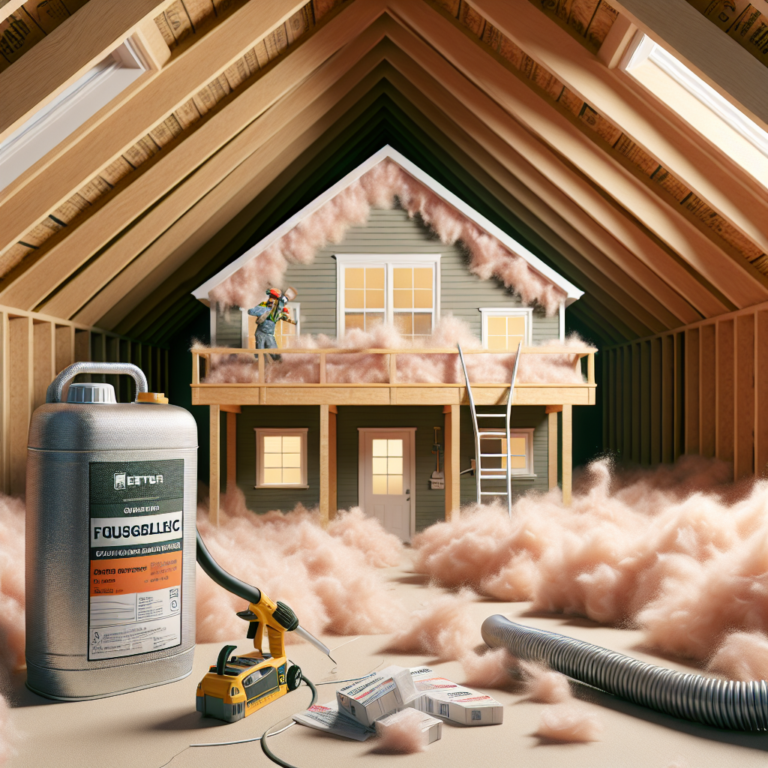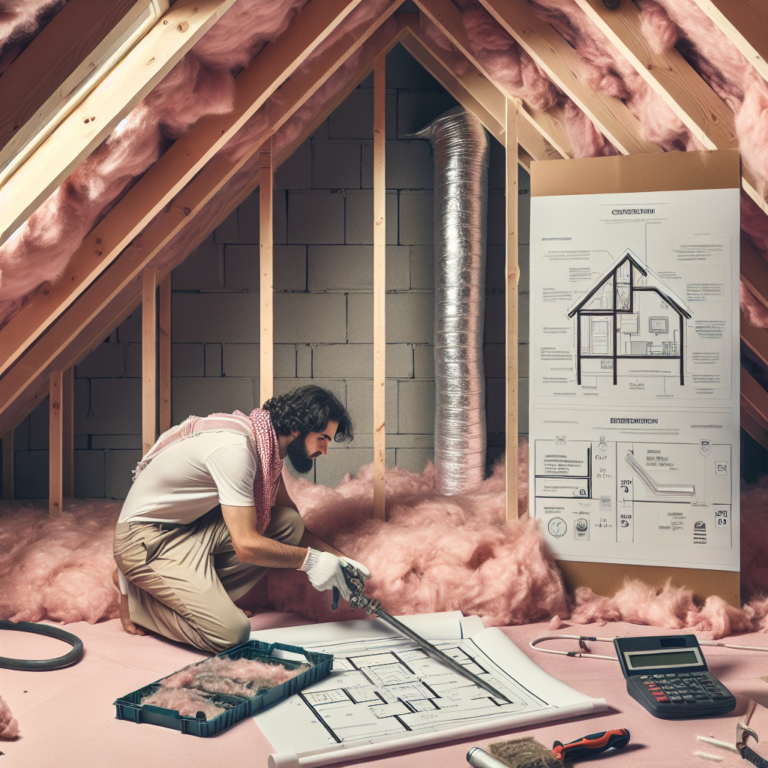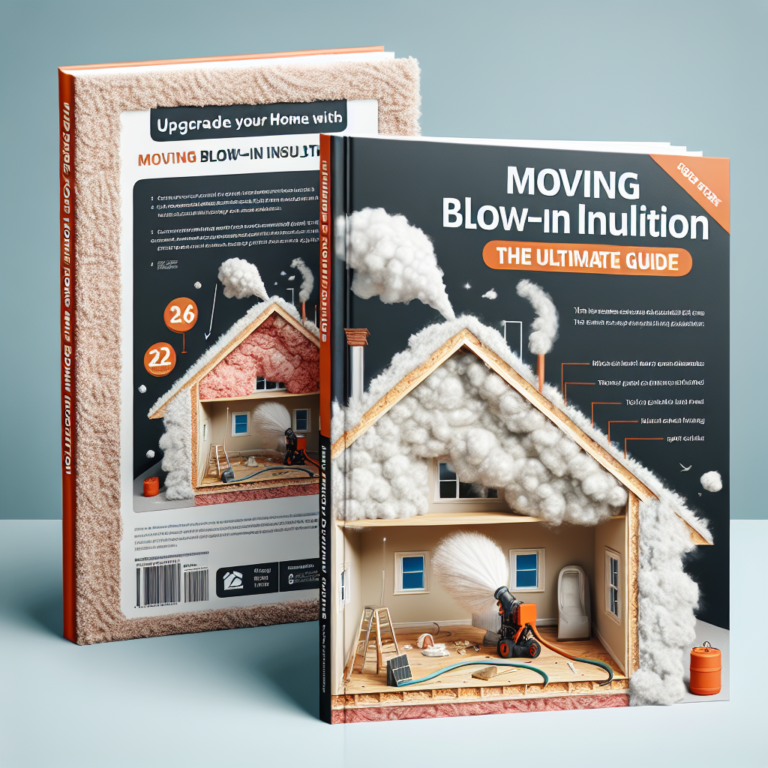-
Table of Contents
“Efficiently insulate any space with blown in insulation – covering every square foot for maximum comfort and savings.”
Introduction
Blown-in insulation is a popular method of insulating homes and buildings. It involves using a machine to blow loose insulation material, such as fiberglass or cellulose, into the walls, attic, or other areas of a structure. This type of insulation is known for its ability to fill in small gaps and crevices, providing a more complete and efficient barrier against heat loss or gain. In this article, we will discuss the concept of blown-in insulation square footage and how it can be used to effectively insulate a space.
The Benefits of Blown-In Insulation for Large Square Footage Homes
Blown-in insulation is a popular choice for homeowners looking to improve the energy efficiency of their homes. This type of insulation involves using a machine to blow loose insulation material, such as fiberglass or cellulose, into the walls, attic, or other areas of a home. While blown-in insulation is beneficial for all types of homes, it is especially advantageous for large square footage homes.
One of the main benefits of blown-in insulation for large square footage homes is its ability to cover a larger area in a shorter amount of time. Traditional insulation methods, such as batt or roll insulation, require precise measurements and cutting to fit into the designated space. This can be a time-consuming and labor-intensive process, especially for homes with a large square footage. On the other hand, blown-in insulation can be quickly and easily installed with the use of a machine, making it a more efficient option for larger homes.
In addition to its efficiency, blown-in insulation also provides better coverage and a more airtight seal compared to traditional insulation methods. The loose insulation material can fill in any gaps or crevices, creating a more complete and uniform layer of insulation. This is especially beneficial for large square footage homes, as they tend to have more nooks and crannies that can be difficult to insulate with traditional methods. The airtight seal created by blown-in insulation also helps to prevent air leaks, which can significantly impact the energy efficiency of a home.
Another advantage of blown-in insulation for large square footage homes is its ability to provide better soundproofing. The loose insulation material absorbs sound waves, reducing noise transfer between rooms and from the outside. This is particularly beneficial for large homes, where there may be multiple rooms and levels that require soundproofing. Blown-in insulation can help create a quieter and more comfortable living environment for homeowners and their families.
Furthermore, blown-in insulation is a more environmentally friendly option compared to traditional insulation methods. The loose insulation material is often made from recycled materials, such as shredded newspaper or recycled glass. This not only reduces waste but also helps to conserve natural resources. Additionally, blown-in insulation is a more energy-efficient choice, as it can significantly reduce the amount of energy needed to heat or cool a home. This can lead to lower energy bills and a smaller carbon footprint for homeowners.
One of the most significant benefits of blown-in insulation for large square footage homes is its cost-effectiveness. While the initial cost of blown-in insulation may be slightly higher than traditional methods, the long-term savings make it a worthwhile investment. The airtight seal created by blown-in insulation helps to reduce energy consumption, resulting in lower heating and cooling costs. This is especially beneficial for large homes, where energy bills can quickly add up. Additionally, blown-in insulation is a durable option that can last for many years, reducing the need for frequent replacements or repairs.
In conclusion, blown-in insulation offers numerous benefits for large square footage homes. Its efficiency, coverage, soundproofing capabilities, environmental friendliness, and cost-effectiveness make it a top choice for homeowners looking to improve the energy efficiency of their homes. With its ability to quickly and easily cover a larger area, blown-in insulation is an excellent option for those with large homes. By investing in blown-in insulation, homeowners can enjoy a more comfortable living environment while also saving money and reducing their environmental impact.
Maximizing Energy Efficiency with Spray Foam Insulation for High Square Footage Buildings

When it comes to maximizing energy efficiency in high square footage buildings, one of the most effective solutions is spray foam insulation. This type of insulation has gained popularity in recent years due to its numerous benefits, including its ability to provide a tight seal and prevent air leakage. In this article, we will explore the use of spray foam insulation for high square footage buildings and how it can help improve energy efficiency.
First and foremost, it is important to understand what spray foam insulation is and how it differs from traditional insulation methods. Unlike traditional insulation, which typically comes in rolls or batts, spray foam insulation is applied as a liquid and expands to fill the designated space. This allows for a more precise and thorough application, ensuring that every nook and cranny is covered. Additionally, spray foam insulation has a higher R-value (a measure of thermal resistance) compared to other types of insulation, making it more effective in keeping heat or cool air inside the building.
One of the main advantages of using spray foam insulation in high square footage buildings is its ability to create an airtight seal. This is especially important in large buildings where air leakage can occur through small cracks and gaps, leading to energy loss. With spray foam insulation, these gaps are filled and sealed, preventing air from escaping and reducing the need for constant heating or cooling. This not only improves energy efficiency but also helps to maintain a comfortable indoor temperature.
Another benefit of spray foam insulation for high square footage buildings is its durability. Unlike traditional insulation, which can sag or settle over time, spray foam maintains its shape and effectiveness for many years. This is particularly important in large buildings where access to the insulation for repairs or replacements may be difficult. With spray foam, building owners can have peace of mind knowing that their insulation will continue to provide energy efficiency for years to come.
In addition to its energy-saving properties, spray foam insulation also offers soundproofing benefits. In high square footage buildings, noise can easily travel from one area to another, causing disruptions and discomfort. Spray foam insulation helps to reduce noise transmission, creating a quieter and more peaceful environment for occupants. This is especially beneficial in commercial buildings where noise levels can impact productivity and customer experience.
When it comes to the square footage of a building, the amount of insulation needed can vary. However, with spray foam insulation, the amount of insulation needed is typically less compared to traditional methods. This is because spray foam expands to fill the designated space, eliminating the need for multiple layers of insulation. This not only saves time and effort during installation but also reduces the overall cost of insulation.
In conclusion, spray foam insulation is a highly effective solution for maximizing energy efficiency in high square footage buildings. Its ability to create an airtight seal, durability, soundproofing benefits, and cost-effectiveness make it a top choice for building owners. If you are looking to improve the energy efficiency of your high square footage building, consider using spray foam insulation for long-lasting and effective results.
Blown-In vs. Spray Foam Insulation: Which is the Better Choice for Large Square Footage Properties?
When it comes to insulating a large property, such as a commercial building or a spacious home, the type of insulation used can make a significant difference in terms of energy efficiency and cost savings. Two popular options for insulating large square footage properties are blown-in insulation and spray foam insulation. Both have their own unique benefits and drawbacks, and it’s important to understand the differences between the two in order to make an informed decision.
Blown-in insulation, also known as loose-fill insulation, is made up of small particles of materials such as fiberglass, cellulose, or mineral wool. These particles are blown into the walls, attics, or other spaces using a special machine. The insulation settles into the space, creating a thick layer that helps to trap heat and keep the property warm in the winter and cool in the summer.
One of the main advantages of blown-in insulation is its ability to fill in small gaps and crevices, providing a more complete coverage compared to other types of insulation. This makes it a great choice for large properties with irregularly shaped spaces or hard-to-reach areas. Additionally, blown-in insulation is relatively easy and quick to install, making it a cost-effective option for large square footage properties.
On the other hand, spray foam insulation is a type of insulation that is applied using a spray gun. It is made up of a mixture of chemicals that expand and harden upon contact, creating a thick layer of insulation. Unlike blown-in insulation, spray foam insulation can be applied to both open and closed spaces, making it a versatile option for large properties.
One of the main advantages of spray foam insulation is its high R-value, which is a measure of its thermal resistance. Spray foam insulation has a higher R-value compared to other types of insulation, meaning it provides better insulation and can help reduce energy costs. Additionally, spray foam insulation is known for its ability to create an airtight seal, preventing air leaks and reducing the transfer of heat.
When it comes to cost, blown-in insulation is generally more affordable compared to spray foam insulation. This is because the materials used for blown-in insulation are less expensive and the installation process is less labor-intensive. However, spray foam insulation may provide more long-term cost savings due to its higher R-value and airtight seal, which can result in lower energy bills.
Another factor to consider when choosing between blown-in and spray foam insulation for a large property is the environmental impact. Blown-in insulation is typically made from recycled materials and can be easily removed and reused if needed. On the other hand, spray foam insulation is made from chemicals that can be harmful to the environment and may be more difficult to remove.
In terms of maintenance, both blown-in and spray foam insulation require minimal upkeep. However, if any repairs or renovations are needed, blown-in insulation can be easily removed and replaced, while spray foam insulation may require more extensive work.
In conclusion, when it comes to insulating a large square footage property, both blown-in and spray foam insulation have their own unique benefits and drawbacks. Blown-in insulation is a cost-effective and versatile option, while spray foam insulation provides better insulation and can result in long-term cost savings. Ultimately, the best choice will depend on the specific needs and priorities of the property owner. It is recommended to consult with a professional insulation contractor to determine the most suitable option for a specific property.
Q&A
Q: What is blown in insulation?
A: Blown in insulation is a type of insulation material that is installed by blowing it into the desired space using specialized equipment.
Q: How is blown in insulation installed?
A: Blown in insulation is installed by using a blowing machine to distribute the insulation material evenly into the desired space, such as an attic or wall cavity.
Q: How much square footage can blown in insulation cover?
A: The amount of square footage that blown in insulation can cover depends on the type and thickness of the insulation, as well as the desired R-value. Generally, it can cover anywhere from 100-150 square feet per bag.
Conclusion
In conclusion, blown-in insulation is a popular and effective method for insulating homes and buildings. It is a cost-effective solution that can cover a large square footage, making it a practical choice for both new constructions and existing structures. With its ability to fill in small gaps and crevices, blown-in insulation provides excellent coverage and can improve energy efficiency. It is also a relatively quick and easy installation process, making it a convenient option for homeowners. Overall, blown-in insulation is a great choice for increasing comfort and reducing energy costs in any building.




